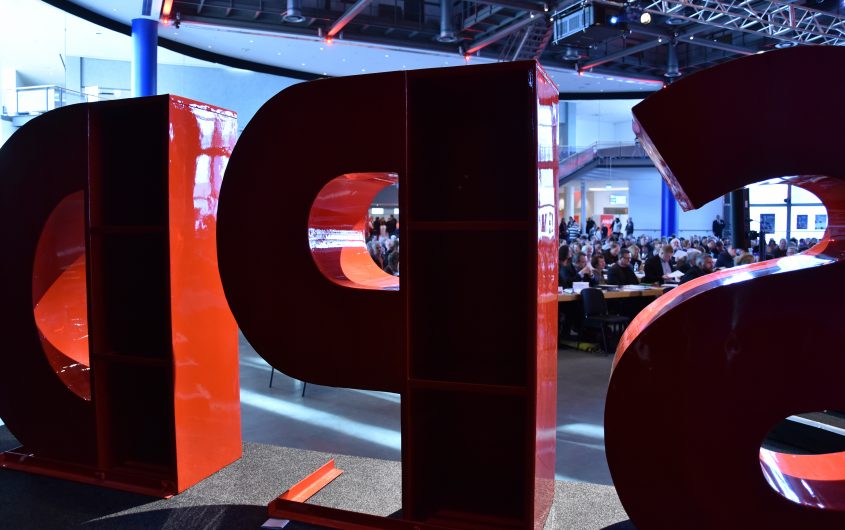
SPD Schleswig-Holstein via Flickr
Quo Vadis, Alte Tante?

Ed Turner
Aston University
Ed Turner is Reader in Politics at Aston University, based in the Aston Centre for Europe. He has published widely on German politics, and is currently undertaking a research project on the SPD, funded by the German Academic Exchange Service, DAAD.

Jana Faus
pollytix strategic research
Jana Faus co-founded pollytix strategic research, a research-based consulting agency focusing on polling and issue management, in 2012. She has more than 15 years of experience in the field of social science and political consulting and has published numerous studies on politics, society and election campaigns. Jana has co-authored ‘Aus Fehlern lernen’ (‘Learning from mistakes’), the analysis of the SPD election campaign 2017.
The SPD and the 2021 Bundestag Election
The SPD is in a difficult position at the moment, polling at around 15 percent just months before Germany’s federal election. Discussion of its predicament often focuses on some of the party’s immediate challenges, but it is worth looking at these in a wider context. This article comments on the SPD’s difficulties, venturing some projections about what the future might hold.
As the chart below shows, the SPD has been in decline since the late 1960s, with a few moments of greater strength – in the late 1990s under Gerhard Schröder, when Helmut Kohl’s CDU government had run out of road; briefly during the era of the unpopular CDU/FDP coalition between 2009 and 2013; and then in early 2017 with the selection of Martin Schulz as leader and chancellor candidate. Even in the latter two periods, though, the recovery was only relative, with the party closer to 30 percent than to the 40 percent it received in its heyday.
Bundestag Election Results Since 1949

One immediate cause of this is the crowded nature of Germany’s party system. In the center-ground, the SPD faces competition from the CDU/CSU, which at least in the last fifteen years has presented itself as moderate (Angela Merkel has often faced charges of “social democratization” of the party from hardline skeptics in her own ranks). Merkel has also sometimes been accused of “asymmetric demobilization” of the electorate, dulling political conflict by picking issues that garner support for her opponents and changing the CDU’s position. A good illustration would be the Fukushima nuclear disaster: this led to a bounce for the Greens in the polls in March 2011 (as can be seen on the graph) but Merkel promptly changed the CDU’s position and embraced a swifter exit from nuclear power than had previously been foreseen.
Polling Trends 2009-Today

The SPD also faces competition from the Green Party, which has moved from being a likely junior coalition partner to the SPD in a “2+2” party system to a larger party very open to coalitions with both the CDU and the SPD. The Linke (Left Party) presents a challenge to the left of the SPD, having been able to exploit discontent with cuts to welfare entitlements (the so-called “Hartz reforms”) initiated by the SPD in the mid-2000s. Space on the authoritarian right of the spectrum is occupied by the Alternative for Germany (AfD), though there is ample evidence that the AfD is not the main recipient of former SPD support.
This, in turn, gives the SPD a real strategic challenge. It has historically seen itself as a Volkspartei – a party with a cross-class, cross-sectoral appeal to different sections of the electorate. This may be a good strategy if the party is polling at around 40 percent, but with such sharp competition and poll ratings of 15 percent, it may be better to choose which section to appeal to. Some urge a concerted effort to win back liberally minded, Green-leaning voters, others push the SPD to take a more hostile stance on immigration that, they contend, would help win back more conservative-minded voters. Views will differ on the right course, but without such a strategic choice, there is a risk of becoming a Volkspartei without a Volk. To coin an English saying, those who lie in the middle of the road get run over.
Whatever strategic choice the SPD takes, Green issues have gained substantially in prominence amongst the German electorate. This is an area where the SPD desperately needs to raise its profile (in spite of holding the federal environment ministry, it is not cutting through on these issues), and find an attractive stance that is nonetheless distinctive from that of the Greens.
In terms of the 2021 federal election, it is difficult to foresee a route to the SPD remaining in power. Angela Merkel’s departure is sometimes viewed as a game-changer, and the SPD’s last hope is that, as the electorate realizes that she is finally leaving the stage, it will seek an experienced, reassuring figure, and that Olaf Scholz, who as Federal Finance Minister has performed well during the COVID-19 pandemic, will fit the bill. But this feels unlikely, and throughout its time in government, the SPD has suffered from not getting sufficient credit for its achievements as the CDU’s junior partner, even though, in substantive terms (think minimum wage, pension increases, an income boost for lower-paid workers) there should be much to celebrate.
pollytix’s coalition calculator shows the evolution of different coalition options over time. Current polling shows a clear majority for a CDU/CSU-Green coalition, and that seems by far the most likely outcome. Options involving the SPD are either unwanted (a renewal of a CDU/CSU-SPD coalition would surely be a bridge too far for the party’s membership), or unrealistic. The option of a “Red-Red-Green” (R2G) coalition involving the SPD, Left Party, and the Greens may be kept on the table, as it could suit all the parties: for the SPD and the Left Party, it presents a viable route to power and emphasizes their continuing relevance to the electorate; the Greens are surely aided in future coalition negotiations with the CDU by having an alternative option to which they can point; the CDU will enjoy taunting the electorate with the threat of R2G. But the new group of Left Party parliamentarians is likely to contain a large number of hardliners who, for example, believe Germany has no place in NATO. They are extremely unlikely coalition partners for Olaf Scholz and indeed today’s Greens. On which note: today’s Greens are a different creature to the party of twenty years ago, and are comfortable forming alliances with both the SPD and the CDU. In last year’s local elections in North Rhine-Westphalia, they were, for instance, quite happy to endorse CDU candidates in some major cities against their SPD opponents. Another possibility would be a “traffic light” coalition of Greens, SPD, and the liberal FDP, but it is not certain that the FDP will clear the 5 percent hurdle (the party has had a rocky time since scuppering federal coalition negotiations in 2017), that such an alliance would have a majority, and even if all those things happened, the Greens might well prefer an alliance with the CDU/CSU anyway.
Going into opposition will not be a panacea for the SPD, as the state level shows all too clearly. In 2018 in Hesse, the SPD vote dropped over 10 percent when the party was up against an incumbent CDU/Green administration. In Baden-Württemberg, the SPD’s polling against a Green-CDU coalition is barely over 10 percent. If the SPD strategically repositioned so that it was squarely in the “Green-Left” space as opposition to a CDU/Green government, it might struggle to find the right leadership to match that agenda: frontrunners like Manuela Schwesig, the Minister President of Mecklenburg-West Pomerania, and current General Secretary Lars Klingbeil, are closely associated with a centrist, pragmatic course. The party will also be in government in several Länder and therefore be responsible for passing much legislation through the country’s second chamber, the Bundesrat – a further driver of very pragmatic, responsible opposition. The party’s wretched polling position brings other challenges too: a scramble for the declining number of list places will prevent new faces from entering the Bundestag, and it increases incentives for politicians to play to the party gallery rather than the wider electorate. State party funding and opportunities for patronage will also both decline.
So does this mean the party is finished and will end up with the fate of what is sometimes called “Pasokification,” when a historically strong center-left party becomes almost irrelevant? There are good reasons to think not. The party faces major demographic challenges, especially amongst younger voters: at the 2019 European elections, it secured the votes of just 8 percent of those aged 18-24, compared to 24 percent of over 70s, and is in a desperately weak position in some parts of southern and eastern Germany. But the flip side is that it does retain strength in some Länder and municipalities, and the fact the party is polling neck-and-neck with the CDU in Rhineland Palatinate (by no means natural SPD territory), under a very popular Minister-President, Malu Dreyer, in advance of regional elections on March 14, suggests a degree of resilience. The SPD may be down, but it is most certainly not out.








